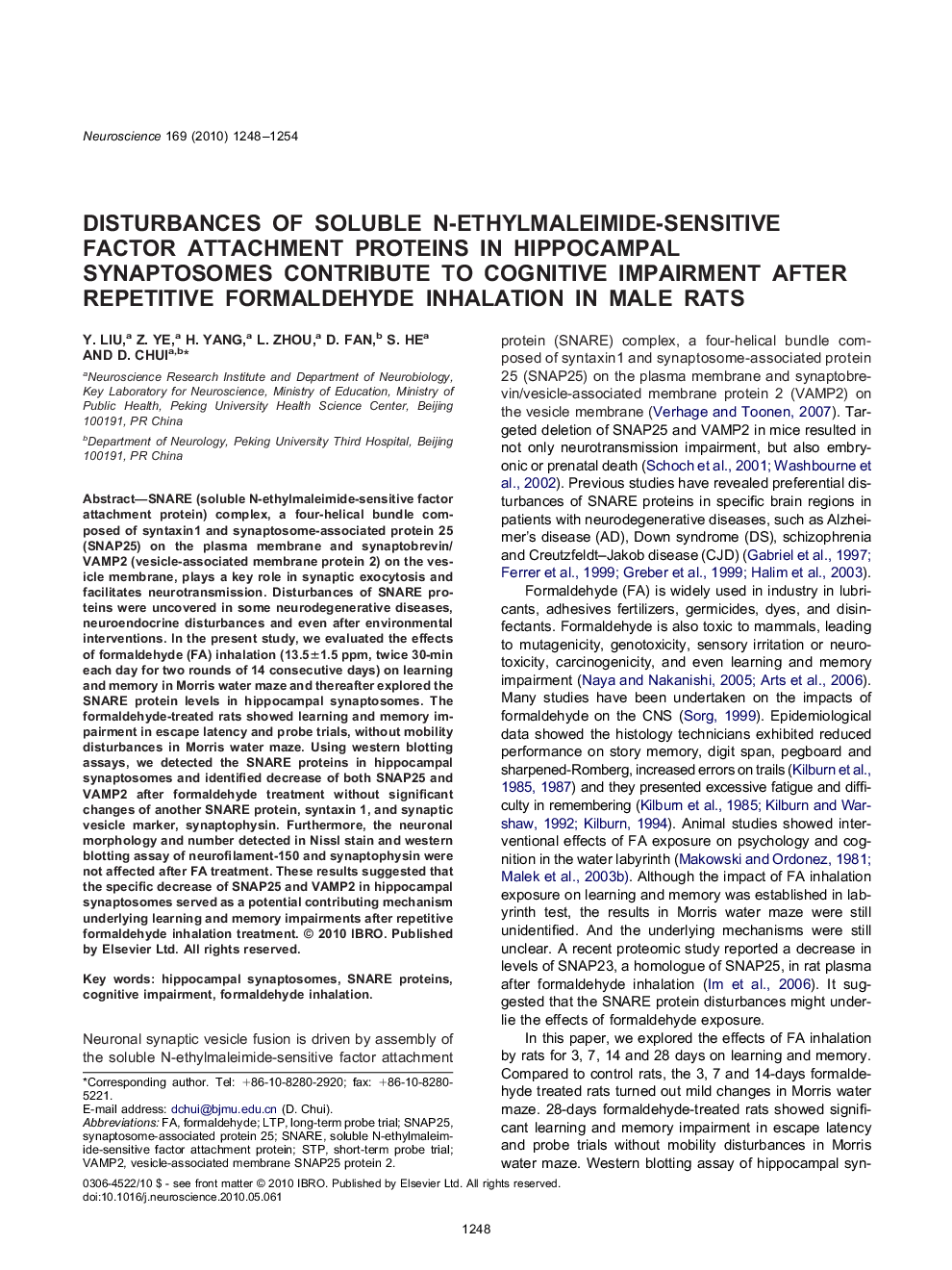| Article ID | Journal | Published Year | Pages | File Type |
|---|---|---|---|---|
| 6277025 | Neuroscience | 2010 | 7 Pages |
SNARE (soluble N-ethylmaleimide-sensitive factor attachment protein) complex, a four-helical bundle composed of syntaxin1 and synaptosome-associated protein 25 (SNAP25) on the plasma membrane and synaptobrevin/VAMP2 (vesicle-associated membrane protein 2) on the vesicle membrane, plays a key role in synaptic exocytosis and facilitates neurotransmission. Disturbances of SNARE proteins were uncovered in some neurodegenerative diseases, neuroendocrine disturbances and even after environmental interventions. In the present study, we evaluated the effects of formaldehyde (FA) inhalation (13.5±1.5 ppm, twice 30-min each day for two rounds of 14 consecutive days) on learning and memory in Morris water maze and thereafter explored the SNARE protein levels in hippocampal synaptosomes. The formaldehyde-treated rats showed learning and memory impairment in escape latency and probe trials, without mobility disturbances in Morris water maze. Using western blotting assays, we detected the SNARE proteins in hippocampal synaptosomes and identified decrease of both SNAP25 and VAMP2 after formaldehyde treatment without significant changes of another SNARE protein, syntaxin 1, and synaptic vesicle marker, synaptophysin. Furthermore, the neuronal morphology and number detected in Nissl stain and western blotting assay of neurofilament-150 and synaptophysin were not affected after FA treatment. These results suggested that the specific decrease of SNAP25 and VAMP2 in hippocampal synaptosomes served as a potential contributing mechanism underlying learning and memory impairments after repetitive formaldehyde inhalation treatment.
